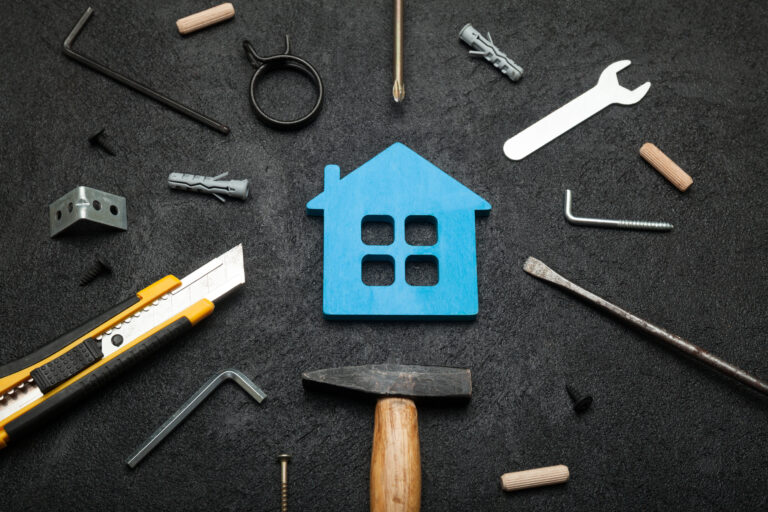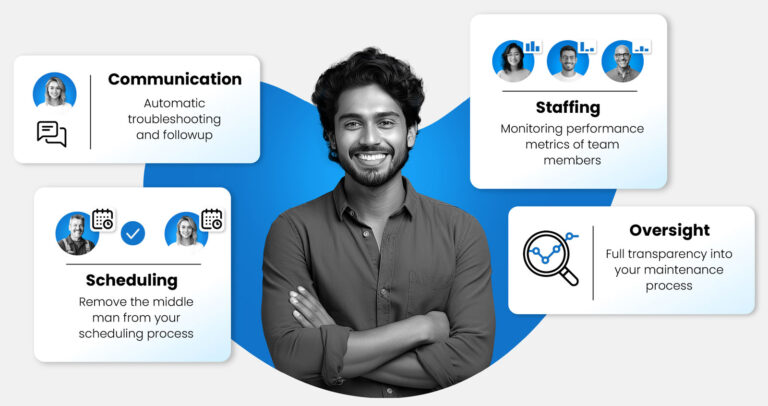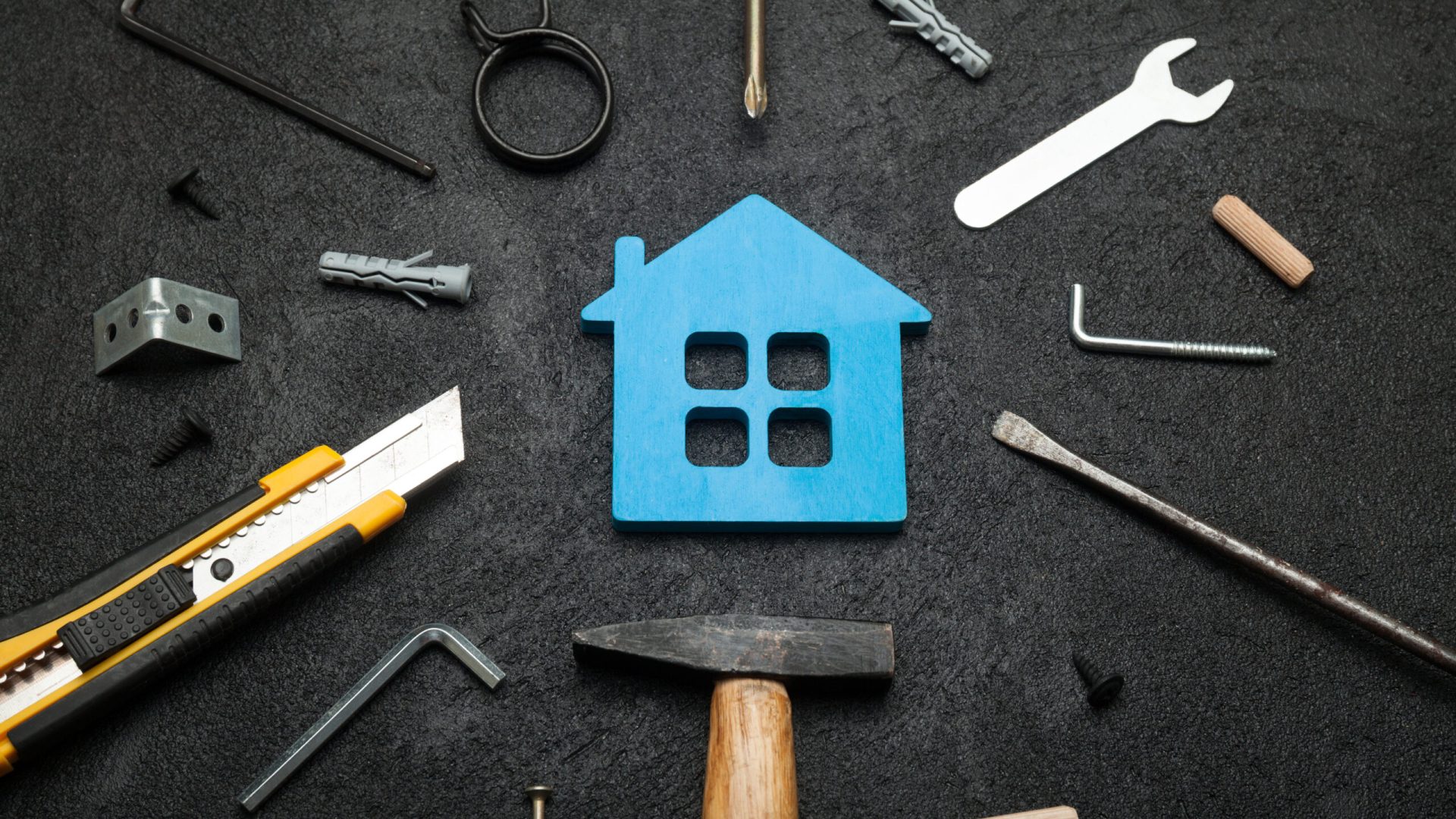Property Maintenance Guide for Property Managers
Table of Contents
Property maintenance is one of the core responsibilities of property managers. It involves ensuring that the property is in good condition, which not only keeps residents happy but also preserves the value of the property for the owners. In this property maintenance guide, we will explore the essential aspects of property maintenance, including the use of work order scheduling software, understanding what work order management software is, and the different types of property maintenance that every property manager should be aware of.

The Importance of a Property Maintenance Guide
A comprehensive property maintenance guide serves as a roadmap for property managers to follow. It outlines the procedures and best practices for maintaining a property efficiently.
Proper maintenance processes helps in:
- Reducing Costs: Preventive and predictive maintenance can help avoid costly emergency repairs.
- Enhancing Resident Satisfaction: Well-maintained properties lead to happier residents who are more likely to renew their leases. 31% of residents leave a property due to a negative maintenance experience.
- Increasing Property Value: Regular maintenance ensures the property remains in good condition, preserving its market value.
What is Work Order Management Software?
Work order management software like Property Meld is a web-based solution that helps property managers streamline and automate the maintenance process. It allows managers to create, assign, and track maintenance tasks efficiently. Here are some key features and benefits:
- Task Creation and Assignment:
- Residents can easily submit maintenance requests allowing property managers or maintenance coordinators to assign work orders to the proper maintenance technician or third party vendors.
- The software ensures that the right person is assigned and work orders are scheduled quickly.
- Tracking and Monitoring:
- The software provides real-time updates on the status of work orders, ensuring transparency and offering accountability to all key stakeholders.
- Managers and maintenance coordinators can monitor the progress of tasks and ensure they are completed on time.
- Record Keeping:
- Work order management software maintains detailed records of all maintenance activities.
- This helps in tracking the history of repairs and maintenance, which is useful for future planning and budgeting.

What is Work Order Scheduling Software?
Work order scheduling software is specifically designed to help property managers plan and schedule maintenance tasks. It optimizes the allocation of resources and ensures that maintenance activities are carried out efficiently. Key features include:
- Automated Scheduling:
- Property Meld can automatically schedule routine maintenance tasks based on predefined intervals.
- This ensures that regular upkeep tasks, such as HVAC inspections or landscaping, are never overlooked.
- Additionally, users can set preconfigured automations to schedule resident-submitted requests with the proper repair person.
- Resource Management:
- Work order scheduling software helps in managing maintenance staff and other resources.
- It prevents scheduling conflicts and ensures that maintenance personnel are utilized effectively.
- Improved Efficiency:
- By automating the scheduling process, property managers can focus on other important tasks.
- The software helps in reducing downtime and improving the overall efficiency of maintenance operations.
Types of Property Maintenance
Property maintenance can be categorized into several types, each with its own set of procedures and best practices. Understanding these types is crucial for effective property management.
- Corrective Maintenance:
Corrective maintenance is a reactive maintenance strategy that involves repairing or replacing broken or malfunctioning equipment and systems after issues are identified. For example, if an air conditioning unit in a residential building stops working during a heatwave, corrective maintenance would involve diagnosing the problem and performing the necessary repairs or replacement to restore functionality. The pros of corrective maintenance include the ability to address immediate issues quickly and fully utilize equipment until failure. However, the cons are significant, as it can lead to higher costs due to emergency repairs, increased downtime, and potential safety risks if critical systems fail unexpectedly.
- Preventive Maintenance:
Preventive maintenance is a proactive approach that involves regularly scheduled inspections and routine maintenance tasks to prevent equipment and system failures before they occur. For example, regularly servicing an HVAC system by cleaning filters and checking for wear can prevent a breakdown during peak usage seasons. This method is preferred by property owners and residents because it reduces the likelihood of unexpected and costly emergency repairs, extends the lifespan of equipment, and ensures consistent comfort and safety in the property. Preventive maintenance fosters a well-maintained environment, leading to higher resident satisfaction and retention.
- Predictive Maintenance:
Predictive maintenance is a proactive strategy that uses data analytics, sensors, and machine learning to predict when equipment will fail, allowing for maintenance to be scheduled just before a failure occurs. Unlike preventive maintenance, which follows a set schedule, predictive maintenance relies on real-time data to determine the optimal time for maintenance. For example, using sensors to monitor vibration levels in an elevator motor can predict when it will need servicing, preventing a breakdown. The pros of predictive maintenance include reduced maintenance costs, minimized downtime, and extended equipment lifespan. However, it requires significant investment in technology and expertise to analyze data accurately, which can be a con for some property managers.
Implementing a Property Maintenance Strategy
To effectively manage property maintenance, property managers need to implement a comprehensive strategy that includes the following steps:
- Develop a Maintenance Plan:
- Create a detailed maintenance plan that outlines the tasks to be performed, their frequency, and the responsible parties.
- Ensure that the plan covers all types of maintenance, including routine, preventive, emergency, and corrective maintenance.
- Utilize Technology:
- Train Maintenance Staff:
- Provide ongoing training to maintenance staff to ensure they are equipped with the skills and knowledge needed to perform their tasks effectively.
- Emphasize the importance of completing resident maintenance requests quickly, while delivering a high-level of service to residents.
- Monitor and Adjust:
- Regularly review the performance of your maintenance strategy and make adjustments as needed.
- Use data and analytics to identify areas for improvement and optimize maintenance processes.
A well-maintained property is essential for resident satisfaction, cost efficiency, and preserving property value. By following this property maintenance guide, property managers can implement effective maintenance strategies that include the use of work order management and scheduling software. Understanding the different types of property maintenance and utilizing technology will help property managers stay on top of maintenance tasks, ensuring the property remains in excellent condition. Embrace a proactive approach to property maintenance, and you’ll reap the benefits of reduced costs, happier residents, and a well-preserved property.
See how Property Meld can help by booking a demo with one of our maintenance experts.






